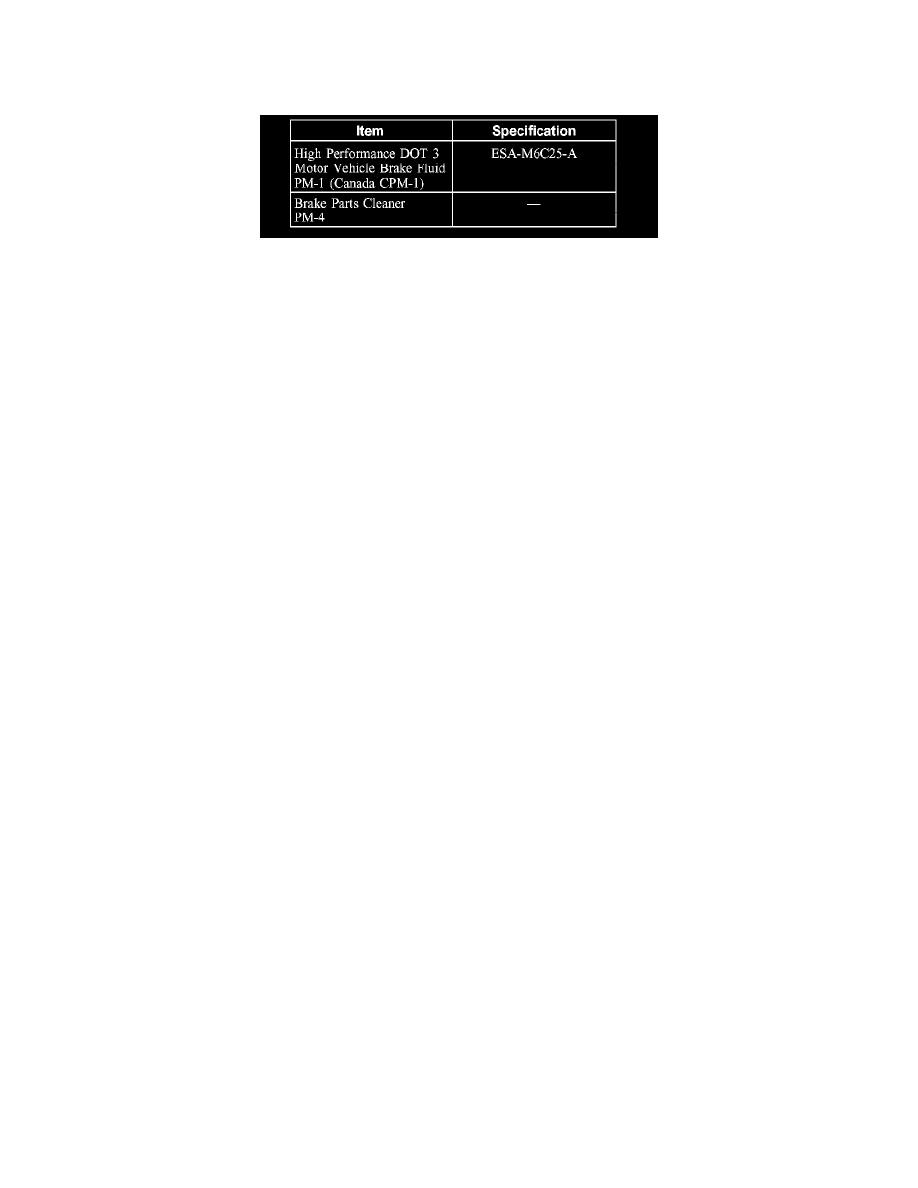Five Hundred AWD V6-3.0L VIN 1 (2005)

Brake Pad: Service and Repair
Front
Brake Pads
Material
Material
Removal
WARNING: Use of any other than approved DOT 3 motor vehicle brake fluid will cause permanent damage to brake components and will
render the brakes inoperative. Failure to follow these instructions may result in personal injury.
WARNING: Brake fluid contains polyglycol ethers and polyglycols. Avoid contact with eyes. Wash hands thoroughly after handling. If
brake fluid contacts eyes, flush eyes with running water for 15 minutes. Get medical attention if irritation persists. If taken internally, drink
water and induce vomiting. Get medical attention immediately. Failure to follow these instructions may result in personal injury.
CAUTION: Brake fluid is harmful to painted and plastic surfaces. If brake fluid is spilled onto a painted or plastic surface, immediately wash it with
water.
CAUTION: Do not allow the brake fluid to come in contact with the adhesive backing on the brake pads. If brake fluid is spilled onto the brake pads
new pads must be installed.
CAUTION: Use only specified brake parts cleaner. Use of other cleaners may leave a residue on the brake caliper preventing the brake pads
adhesive surface from bonding with the brake caliper.
1. Check the brake fluid level in the brake fluid reservoir.
^
If required, remove fluid until the brake master cylinder reservoir is half full.
2. With the vehicle in NEUTRAL, position it on a hoist.
3. CAUTION: Do not use the brake caliper sight hole to retract the pistons as this can damage the pistons and boots.
CAUTION: When removing the brake caliper, never allow it to hang from the brake hose. Provide a suitable support.
Remove and discard the 2 brake caliper anchor plate bolts and position the brake caliper anchor plate, brake caliper, and brake pads aside.
^
Make sure the steering stop is supported when the brake caliper anchor plate bolts are removed.
4. CAUTION: When the brake pads are separated from the brake caliper, new brake pads must be installed. The brake pads are a one-time use only.
NOTE: The brake pads must be separated from the brake caliper before the brake caliper can be removed from the brake caliper anchor plate.
Using a suitable tool, separate the brake pads from the caliper.
5. Remove and discard the brake pads and spring clips from the brake caliper anchor plate.
6. Inspect the brake caliper for leaks or damaged boots.
^
Install a new brake caliper if required.
7. Inspect the brake caliper anchor plate assembly.
^
Check the guide pins and boots for binding or damage.
^
Install a new brake caliper anchor plate if it is worn or damaged.
Installation
1. NOTE: Protect the pistons and boots.
Using a suitable tool, compress the caliper pistons into the caliper bore.
2. Clean the residual adhesive from the brake caliper to brake pad mating surfaces (brake caliper piston and the opposing caliper housing fingers)
using the specified brake parts cleaner.
